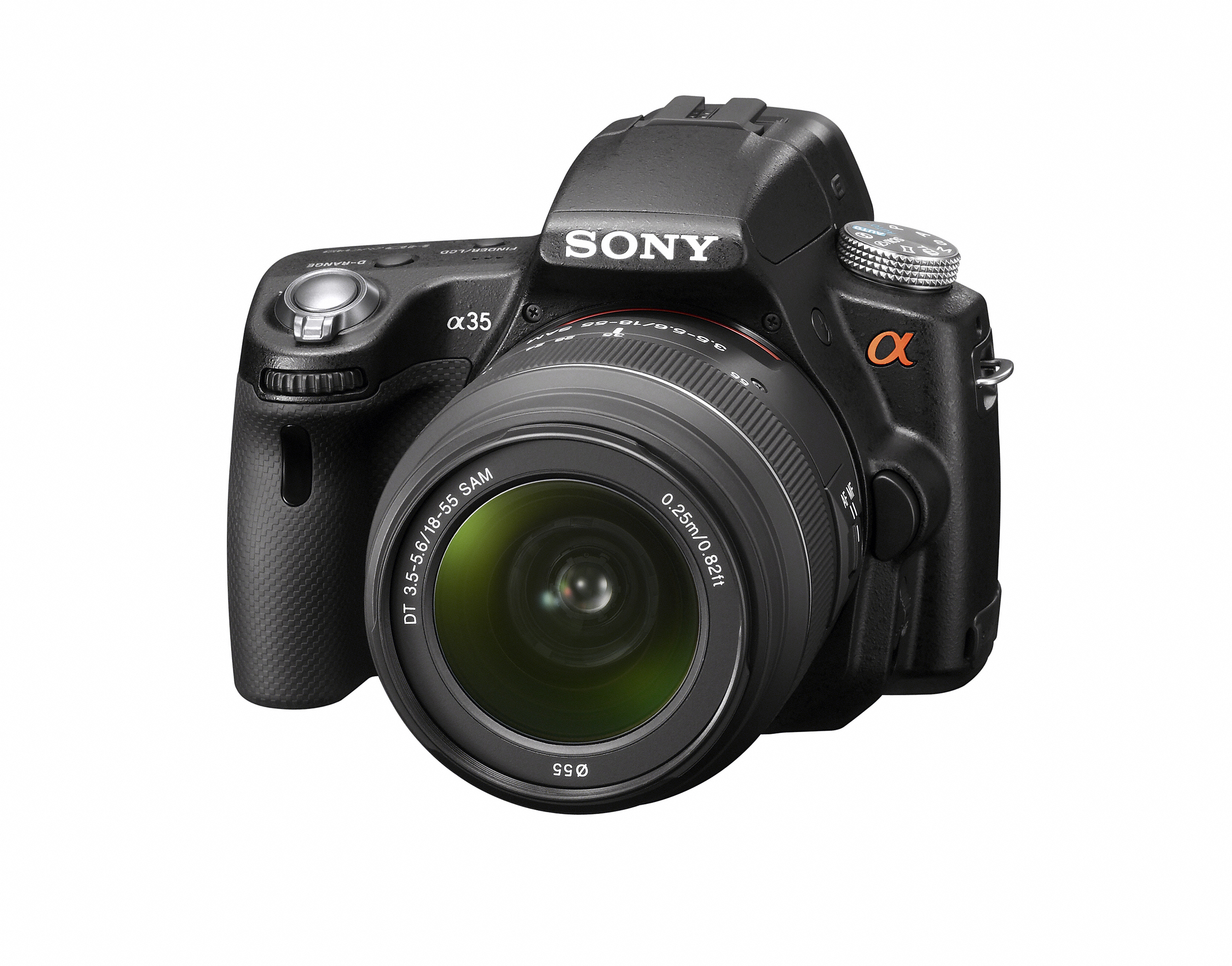Why you can trust TechRadar
Despite being slightly lighter than the SLT-A33, there's little else to separate the new launch from its ancestor externally. Sporting a tough plastic outer shell, the SLT-A35 feels robust enough to withstand daily use. The ergonomically shaped front grip combines with a neatly sculpted rear thumb grip which - in conjunction with a lightly textured, rubberised coating - provides a firm and very comfortable purchase on the well-balanced camera body.
The control layout remains the same, with well-proportioned and intelligently placed buttons spread across the camera body. To the right of the viewfinder hump, the top panel houses a button to toggle between the EVF and LCD, although the former is equipped with sensors that detect when you lift the camera to your eye, automatically shutting off the LCD and switching to the EVF. A customisable D-Range button accesses the camera's dynamic range optimizer feature by default, while the large silver shutter release - which is encircled by the power switch - sits atop the front grip.
The left hand side of the top panel is home to the well-stocked mode dial, which offers a comprehensive array of automatic and scene modes, as well as Sony's excellent Sweep Panorama (with 3D options), plus the new Tele-zoom High Speed feature and manual exposure modes.
A dedicated movie button - perched on the sloping section that links the top to the back panel - provides one-touch access to the SLT-A35's HD video mode, while intuitively-positioned menu, exposure compensation and AEL buttons provide fast access to their respective functions.
Around the back, the Fn button calls up an interactive set of icons on the 3-inch LCD, a feature that - in tandem with the softkey access to frequently-used functions provided by the four-way d-pad - results in a handling experience that is as slick as it is simple. One surprising change is that the high-resolution LCD is now fixed, unlike the SLT-A33's vari-angle version. This makes the SLT-A35 somewhat less versatile by comparison, but - in a bid to keep costs down - Sony had to make a compromise somewhere.
In bright light - although the LCD's anti-reflective coating is usually pretty effective - sometimes it's not enough. In these situations, the SLT-A35 offers an alternative in the form of its electronic viewfinder. Unlike a DSLR - which uses a solid mirror to direct light to its optical viewfinder, giving you a crystal-clear view of the scene as it is transmitted through the lens - the use of SLT technology in this camera means that an optical viewfinder isn't an option.
EVFs are not without their issues, with low resolution displays, a lack of contrast and a slow refresh rate being common complaints, however they have come a long way since they were first implemented, and we're happy to report that the SLT-A35's is pleasingly usable. Offering a fairly detailed display (1.15mp) and 100% frame coverage, the EVF also has the added advantage of being able to display detailed shooting information, as well as an optional live histogram and grid lines to aid in composing your shots - traits that you don't get with an optical viewfinder.
Overall impressions of the SLT-A35 are very good. While we do miss the freedom of shooting with a vari-angle LCD, the impact left by the simple-to-interpret interface, uncluttered menu system and handy on-screen hints and tips (to help beginners with the process of getting to know the camera) is very favourable.
Current page: Sony Alpha 35: Build quality and handling
Prev Page Sony Alpha 35: Overview Next Page Sony Alpha 35: Performance